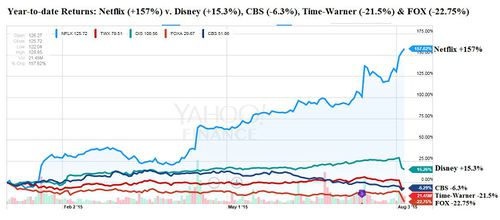Creative Destruction
Creative destruction is a term coined by Joseph Schumpeter in his work entitled "Capitalism, Socialism and Democracy" (1942) to denote a "process of industrial mutation that incessantly revolutionizes the economic structure from within, incessantly destroying the old one, incessantly creating a new one." Creative destruction occurs when something new kills something older. A great example of this is personal computers. The industry, led by Microsoft and Intel, destroyed many mainframe computer companies, but in doing so, entrepreneurs created one of the most important inventions of this century. [1]
‘Creative Destruction’ is a paradoxical term introduced to economic theory in 1942 by the Austrian economist Joseph Schumpeter (1883–1950). He used the term to describe the special form of economic growth that entrepreneurs particularly bring to the capitalist system. Schumpeter argued that it was the entrepreneur’s introduction of radical innovation into the capitalist system that was the real force that sustained long-term economic growth, even as it destroyed the economic value of established enterprises who may have previously enjoyed a degree of monopolistic power. In Schumpeter’s mind, the net economic benefit from the radical innovation, in spite of the destruction of existing economic value, was greater than if the radical innovation had never been introduced. So, the term ‘creative destruction’ describes a process of creating net economic growth in the capitalist system where entrepreneurs create more economic value from their radical innovations than is destroyed as their innovation replaces and supplants the established way of doing things. Fundamental to Schumpeter's belief was that “The essential point to grasp is that in dealing with capitalism, we are dealing with an evolutionary process” [2]
Creative Destruction Example[3]
The success of Netflix is an excellent example of “creative destruction,” a term originated in the 1940s by economist Joseph Schumpeter, who described it as the “process of industrial mutation that incessantly revolutionizes the economic structure from within, incessantly destroying the old one, incessantly creating a new structure. This process of creative destruction is the essential fact about capitalism.” In fact, Netflix has been so disruptive to existing industries, that its impact is now being referred to by some as the “Netflix effect.” Here are a few examples of the “Netflix effect” and the industries that have been “Netflixed.”
1. Video Tape and Disc Rental Industry. The chart above shows how Netflix has almost driven the video tape/disc rental business, along with companies like Blockbuster, into extinction. (Interestingly, Blockbuster passed up a chance in 2000 to purchase Netflix for $50 million — it’s now worth $54 billion.) By the time the BLS started tracking the number of jobs in the video tape rental business in 1985, there were more than 80,000 employees nationwide, and that number more than doubled to 170,000 by early 1999. Blockbuster was the dominant firm in the industry and employed nearly 60,000 employees at more than 9,000 stores at its peak in 2004. But in the last decade, employment in the video/disk rental industry has collapsed from 153,000 jobs in 2005 to fewer than 11,000 in May of this year – that’s a 93% decrease in a decade! That could arguably be the largest percentage employment decline in any US industry over the last decade — even employment in the newspaper industry hasn’t cratered nearly that fast over the last ten years!

source: American Enterprise Institute
2. Traditional Media Companies. After challenging Blockbuster, which filed for bankruptcy in 2010 and was subsequently acquired by Dish Network at auction in 2011, Netflix (along with other online viewing platforms like Hulu, Amazon and Apple TV) is now challenging cable networks, traditional network TV channels, and pay-TV services. The “Netflix effect” can be seen in the chart above that compares the year-to-date stock returns for Netflix (up by 157%) to Disney, which owns the cable networks ESPN, Disney Channels and ABC Family (+15%), CBS (-6.3%), Time-Warner, which owns CNN, HBO and Cinemax (-21.5%), and FOX (-22.75%).
Pros and Cons of Creative Destruction[4]
On the positive side, innovation from creative destruction can be a source of economic expansion resulting in a significant number of new jobs and technologies derived from new industries and even sub-industries. Progress of this nature has the ability to transform entire economies and improve standards of living. Think of what the invention of the automobile did for transportation, commerce, jobs and economic development: It created a plethora of new employment opportunities while allowing people to get where they needed to go faster than a horse-drawn carriage ever could. Not to mention the other industries like oil, steel, roadway development and automotive repair that were created or boosted because of this advancement.
Although with good, usually comes bad. Consider the industries that have been substantially reduced or eliminated by Creative Destruction. For instance, the agriculture industry used to comprise 41% of U.S. civil workforce in 1900, but improvements produced in manufacturing by the Industrial Revolution reduced that figure to 3% by 1980. This caused a considerable number of low-skilled workers to be left unemployed and unqualified to work in the newer factory jobs. This same scenario is playing out today with computers facilitating tasks once performed by people, which is phasing out opportunities in lower-skilled positions, sales, retail, manufacturing and financial analysis positions, to name a few.
References
- ↑ What is Creative Destruction? Investopedia
- ↑ Creative Destruction Definition Quora
- ↑ The Netflix Effect AEI
- ↑ Pros and Cons of Creative Destruction Invetopedia
Further Reading
- Half a Century Later, Economist's 'Creative Destruction' Theory Is Apt for the Internet Age : Schumpeter:The Prophet of Bust and Boom NYTimes
- A cost crisis, changing labour markets and new technology will turn an old institution on its head Economist
- The Innovating Era: Creative Destruction or Destructive Creation? Paul 4 Innovating
- Creative destruction and the financial crisis: An interview with Richard Foster Executives on Demand
